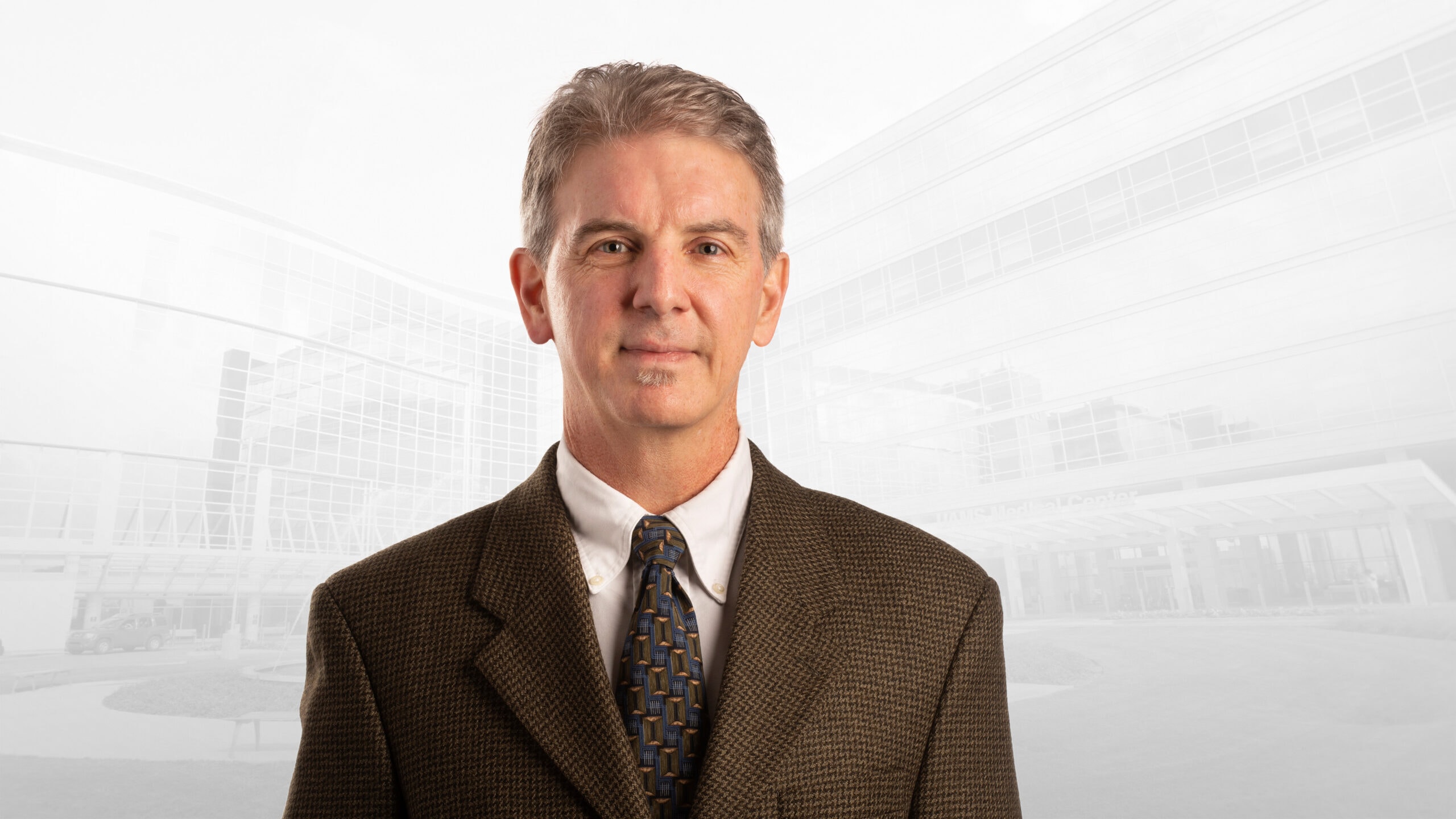Steven Barger, Ph.D., Receives $1.9 Million Grant to Study Role of Glucose Transport in Alzheimer’s Progression
| LITTLE ROCK — Steven Barger, Ph.D., professor of geriatrics in the University of Arkansas for Medical Sciences (UAMS) College of Medicine, has received a five-year federal grant to support his research on the role of glucose transport in the progression of Alzheimer’s disease.
The project will receive $382,500 in funding for the current grant year and a projected total of $1,912,500 over the five-year term. The grant was awarded by the National Institute on Aging, a division of the National Institutes of Health.
Barger, a faculty member at the UAMS Donald W. Reynolds Institute on Aging, said the goal of his research is to test — and potentially treat — a newly discovered element of energy usage in the brains of Alzheimer’s patients.
Alzheimer’s disease is associated with a decline in the brain’s use of glucose, its most important fuel, Barger said. Support cells known as astrocytes shuttle glucose from the bloodstream for use by nerve cells deep within the brain tissue. However, research has shown that an astrocyte enzyme responsible for this shuttling action malfunctions in patients with Alzheimer’s.
Barger also highlighted the importance of a gene variant known as ApoE4, which has been linked to an increased risk of Alzheimer’s. Researchers theorize that ApoE4 contributes to glucose deficiency through its role as a regulator for other genes.
Barger’s study will examine how the regulation of genes affects glucose transport and delivery. Furthermore, it will explore how glucose delivery is affected by interactions between astrocytes and other types of cells — particularly microglia, a group of immune cells responsible for many of the inflammation-related changes seen in the brains of Alzheimer’s patients.
Leading theories about Alzheimer’s disease have focused for decades on the accumulation of amyloid plaques, the clumps of protein that form between neurons and disrupt their function. Those theories have gained credence with the development of treatments such as lecanemab, a drug recently approved by the Food and Drug Administration to remove amyloid from the brain.
Lecanemab has been shown to slow the progression of Alzheimer’s in its early stages, but the effect is modest at best, Barger said.
“We know that amyloid accumulation starts many years before symptoms arise, so it may be that we’ll never catch that soon enough,” he said. “But we feel that we might be able to intervene at the next step of the process, which seems to be the reduction in the delivery of glucose to the brain.”
Barger’s study will also attempt to identify chemical agents with the potential to reverse the glucose irregularities and serve as a treatment for Alzheimer’s.
“We have some clues about the precise mechanisms responsible for this drop in glucose delivery, and we hope that learning more about this process will identify a component that can be remedied with a drug or other treatment,” he said.
Jeanne Wei, M.D., Ph.D., executive director of the Reynolds Institute on Aging, said she looks forward to seeing the outcome of Barger’s study.
“Dr. Barger is a leader in Alzheimer’s disease research, and his efforts will likely result in the development of new therapies for patients living with cognitive impairment and dementia,” she said.
This research is supported by the National Institute on Aging of the National Institutes of Health under Award Number R01AG084473. The content is solely the responsibility of the authors and does not necessarily represent the official views of the National Institutes of Health.
UAMS is the state’s only health sciences university, with colleges of Medicine, Nursing, Pharmacy, Health Professions and Public Health; a graduate school; a hospital; a main campus in Little Rock; a Northwest Arkansas regional campus in Fayetteville; a statewide network of regional campuses; and eight institutes: the Winthrop P. Rockefeller Cancer Institute, Jackson T. Stephens Spine & Neurosciences Institute, Harvey & Bernice Jones Eye Institute, Psychiatric Research Institute, Donald W. Reynolds Institute on Aging, Translational Research Institute, Institute for Digital Health & Innovation and the Institute for Community Health Innovation. UAMS includes UAMS Health, a statewide health system that encompasses all of UAMS’ clinical enterprise. UAMS is the only adult Level 1 trauma center in the state. UAMS has 3,275 students, 890 medical residents and fellows, and five dental residents. It is the state’s largest public employer with more than 12,000 employees, including 1,200 physicians who provide care to patients at UAMS, its regional campuses, Arkansas Children’s, the VA Medical Center and Baptist Health. Visit www.uams.edu or uamshealth.com. Find us on Facebook, X (formerly Twitter), YouTube or Instagram.###
